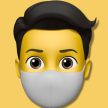What causes headaches?
Thankfully, today's doctors do not make use of machines to relieve headaches. However, there's many things to know about this old ailment.

In ancient Greece headaches were thought to be an affliction that was powerful. Patients prayed for relief to Asclepius the goddess of healing. If the pain remained the doctor could perform the most well-known treatment-- drilling a tiny opening in the skull to drain affected blood. This gruesome procedure, known as trepanation, usually replaces migraine with permanent problem.
Thankfully, today's doctors do not make use of machines to relieve headaches. However, there's many things to know about this old ailment. In the present, headaches are classified into two groups: Primary headaches as well as secondary. They aren't symptoms of an underlying illness or injury and are not the cause. However, we'll return to them shortly because , although primary headaches account for 50 percent of cases reported but we are able to learn better about the secondary types of headaches.
They can be caused by health issues that trigger them, ranging from caffeine withdrawal and dehydration to neck and head injury and heart disease. Doctors have identified over 150 types of diagnoses, each with different causes, symptoms, as well as treatment options. However, we'll use one of the most common cases -- a sinus infection as an example. The sinuses are a set of cavities that extend behind our noses, foreheads and cheeks.
If our sinuses are affected, our immune system increases the temperature of the region, burning the bacteria and causing inflammation to the sinuses to a degree that is beyond their normal size. Sinus engorgement puts stress on the cervical arteries as well as veins, along with muscles that run through the neck and the head. The pain receptors in their bodies, known as nociceptors, are activated upon triggering, prompting your brain to produce a surge of neuropeptides which cause inflammation of the blood vessels in the cranial area that cause swelling and then heat up the head.
This discomfort, coupled with the hyper-sensitive head muscles results in the sore, throbbing pain of headaches. It isn't always the case that headache pain results from swelling. Tensed muscles and inflamed sensitive nerves can cause different degrees of pain in every headache. However, all of them are reactions to an irritant in the cranium. Although the reason for the irritant is obvious in the case of secondary headaches. However but the causes for primary headaches are not known. Researchers are still examining possible causes of the three kinds in primary headaches.
They include frequent chronic migraines, which can last for a long time; painful cluster headaches that are rapid-fire; and, perhaps most commonly of all that of the tension headache. The name itself suggests that tension headaches are known to cause the sensation of a tightening that is squeezed on the top of the head. The headaches cause a greater pain in the pericranial muscle that then painlessly belch with oxygen and blood. Patients mention dehydration, stress, and hormonal changes as triggers, however, these do not match the symptoms in the right way.
For instance, in dehydration headaches the frontal lobe is shrinking away from skulls, leading to forehead swelling that isn't consistent with the exact location of tension headaches' pain. Researchers have theories about the exact cause that range from the spasm of blood vessels or overly sensitive nociceptors, however nobody knows for certain. However, the majority of research on headaches is focused on more severe , primary headaches. Migraines are frequent headaches which cause a vise-like sensation in the skull.
These can last for anywhere from 4 hours up to 3 days. In about 20% instances, the attacks are so intense that they overload your brain's electrical impulses, which stimulates sensory nerves. Auras are hallucinations that cause hallucinations that can involve experiencing flashing lights as well as geometric patterns, as well as experiencing the sensation of tingling.
Cluster headaches, a different headache type, can cause painful, burning bursts of pain behind one eye. that can lead to a red eyes constricted pupil, a red eye, and a the eyelids drooping. What can we do about these ailments, which drastically impact the health and quality of life? Tension headaches and the majority of secondary cases can be addressed by taking prescription pain medication including anti-inflammatory medications that can reduce swelling of the cranium. Many other headache triggers such as dehydration, eye strain, stress, and tension are preventable. Cluster headaches and migraines are more complex and we've not yet come up with a solution that will fit for everyone. However, thankfully, pharmacologists as well as neurologists are busy to unravel these elusive mysteries which weigh heavily on our minds.
About the Creator
Sourav Pan
Hi, my name is Sourav, I am a content writer and seo expert.
Enjoyed the story? Support the Creator.
Subscribe for free to receive all their stories in your feed. You could also pledge your support or give them a one-off tip, letting them know you appreciate their work.






Comments
There are no comments for this story
Be the first to respond and start the conversation.